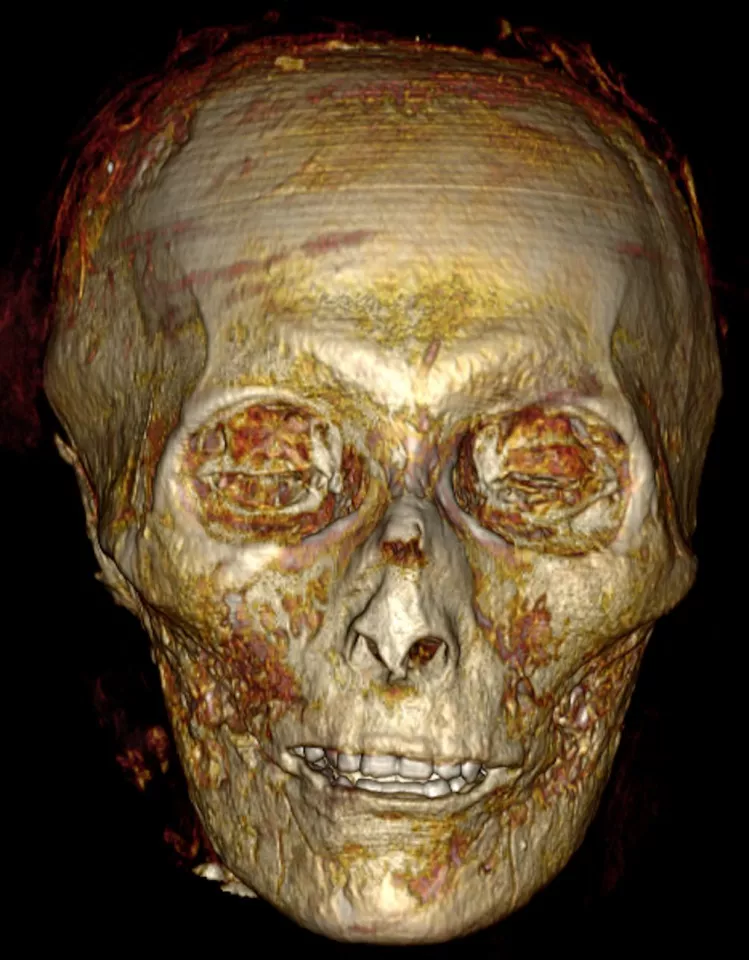While archeologists can learn a lot from studying ancient Egyptian mummified bodies, unwrapping those bodies may damage their valuable coverings. With that problem in mind, scientists have now "digitally unwrapped" a mummy via CT scanning technology.
The remains in question are those of Pharaoh Amenhotep I, who ruled Egypt from approximately 1525 to 1504 BCE. His mummified body was discovered in 1881, at the Deir el Bahari archeological site in southern Egypt. Hieroglyphic inscriptions on the coffin showed that the mummy had been unwrapped, restored and reburied twice in the 11th century BCE, to repair damage caused by grave robbers.
That being said, of all the royal mummies discovered in the 19th and 20th centuries, Amenhotep's is reportedly one of the very few to have not been unwrapped for study in modern times. This is due largely to the fact that scientists didn't want to risk damaging its stone-studded faceplate, or the flower garlands which were placed around its face and neck.

In 2019, a team at Cairo University instead turned to three-dimensional CT (computed tomography) scanning technology to digitally unwrap the mummy, one thin layer at a time. Lead scientists Dr. Sahar Saleem and Dr. Zahi Hawass have now announced their findings.
"Amenhotep I was approximately 35 years old when he died," says Saleem. "He was approximately 169 cm [66.5 in] tall, circumcised, and had good teeth. Within his wrappings, he wore 30 amulets and a unique golden girdle with gold beads. Amenhotep I seems to have physically resembled his father: he had a narrow chin, a small narrow nose, curly hair, and mildly protruding upper teeth."

The scientists found no evidence suggesting his cause of death, although the body had been mutilated post mortem, presumably by the grave robbers. That damage was largely fixed in the two ancient restorations. The CT scans showed that contrary to a previously held theory, such restorations were not conducted mainly to reclaim royal burial materials for reuse.
"We show that at least for Amenhotep I, the priests of the 21st dynasty lovingly repaired the injuries inflicted by the tomb robbers, restored his mummy to its former glory, and preserved the magnificent jewelry and amulets in place," says Saleem.
A paper on the study was recently published in the journal Frontiers in Medicine.
Source: Frontiers via EurekAlert






